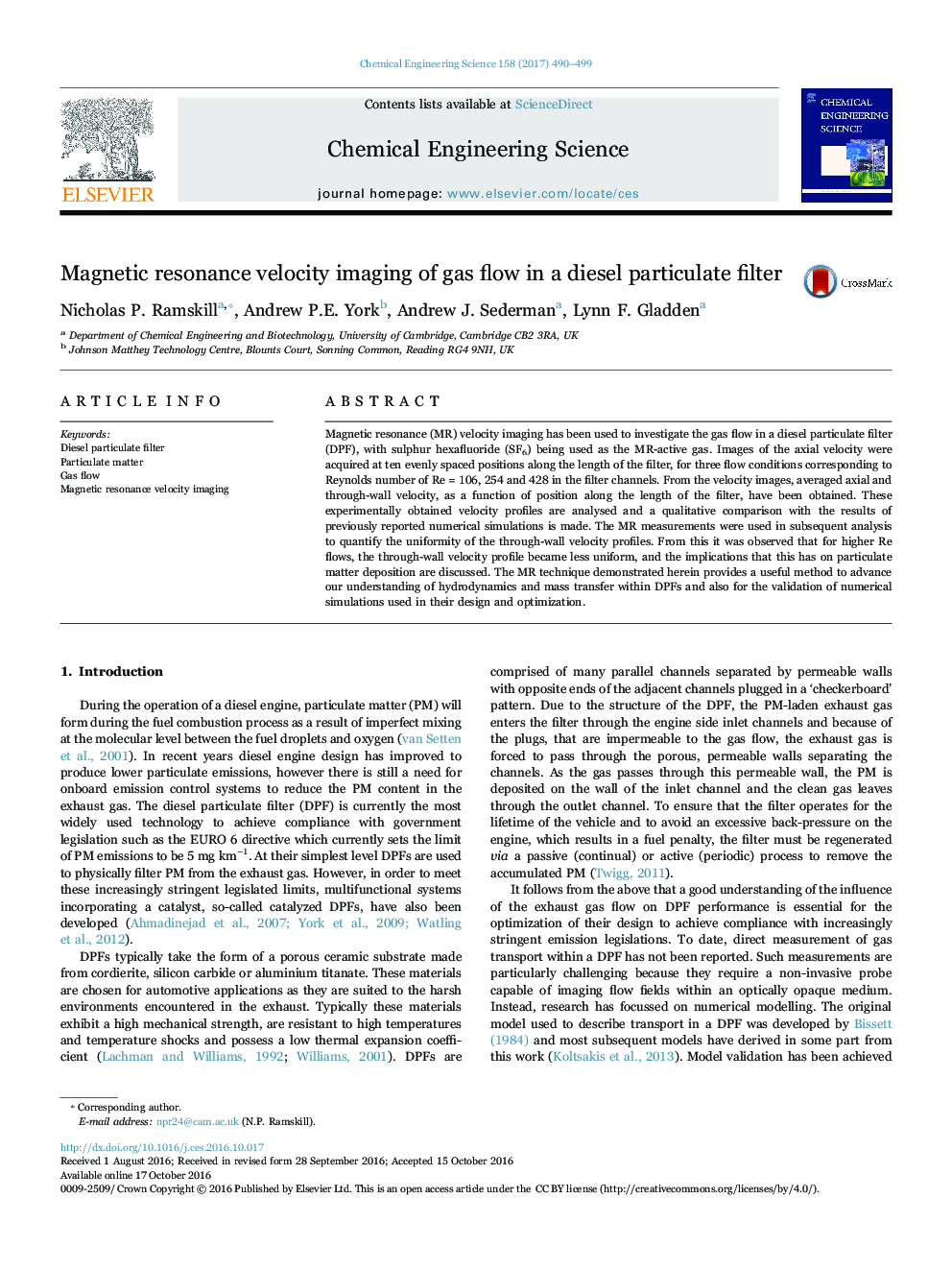| Article ID | Journal | Published Year | Pages | File Type |
|---|---|---|---|---|
| 6467987 | Chemical Engineering Science | 2017 | 10 Pages |
â¢Magnetic resonance velocity imaging has been used to study gas flow in a DPF.â¢Profiles of the average the axial and through-wall velocity are obtained.â¢The uniformity of the through-wall flow field has been quantified.â¢The implication for particulate matter deposition is discussed.â¢Comparisons with flow fields predicted using numerical models are made.
Magnetic resonance (MR) velocity imaging has been used to investigate the gas flow in a diesel particulate filter (DPF), with sulphur hexafluoride (SF6) being used as the MR-active gas. Images of the axial velocity were acquired at ten evenly spaced positions along the length of the filter, for three flow conditions corresponding to Reynolds number of Re = 106, 254 and 428 in the filter channels. From the velocity images, averaged axial and through-wall velocity, as a function of position along the length of the filter, have been obtained. These experimentally obtained velocity profiles are analysed and a qualitative comparison with the results of previously reported numerical simulations is made. The MR measurements were used in subsequent analysis to quantify the uniformity of the through-wall velocity profiles. From this it was observed that for higher Re flows, the through-wall velocity profile became less uniform, and the implications that this has on particulate matter deposition are discussed. The MR technique demonstrated herein provides a useful method to advance our understanding of hydrodynamics and mass transfer within DPFs and also for the validation of numerical simulations used in their design and optimization.
Graphical abstractDownload high-res image (267KB)Download full-size image
